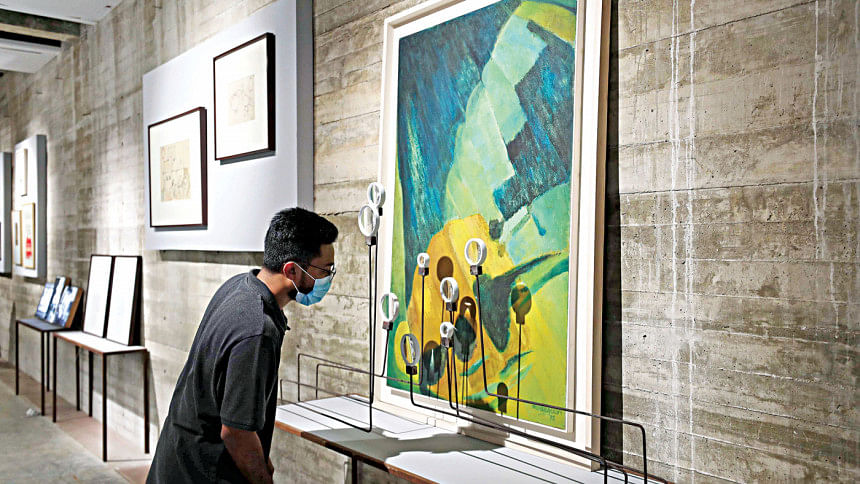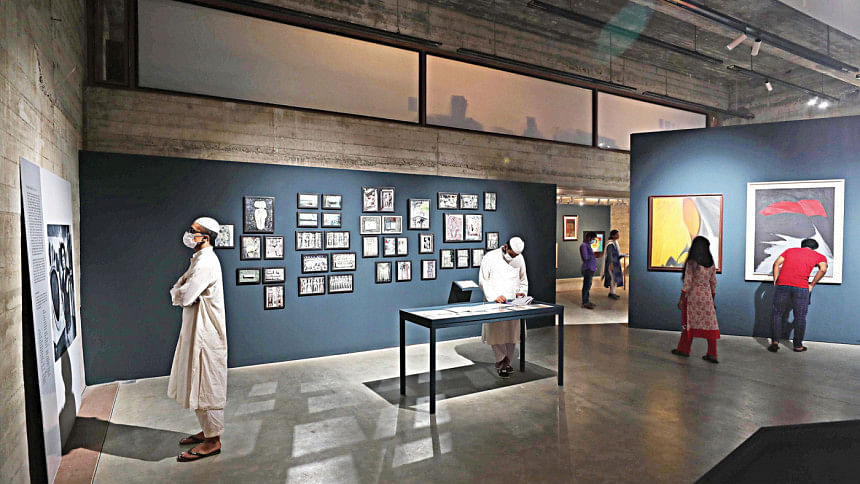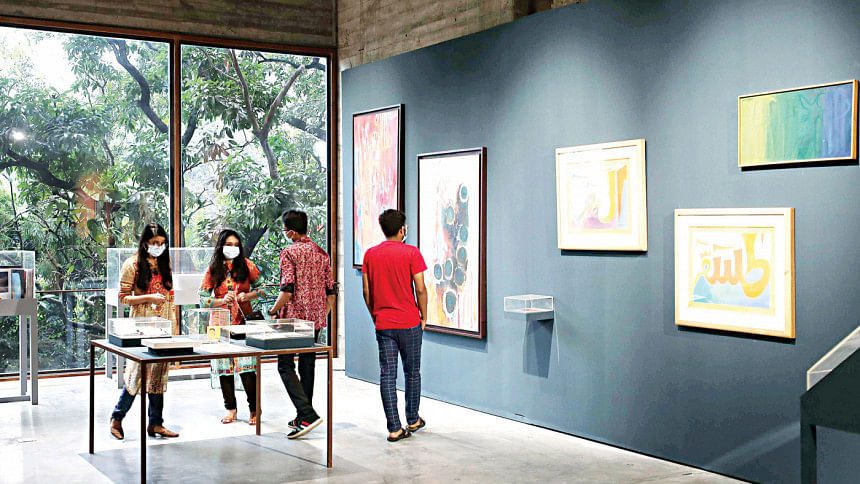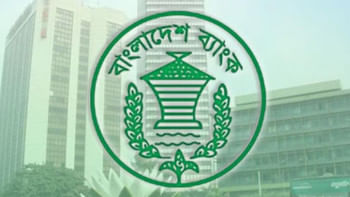Baseer: An Eloquent Mind underway at Bengal Shilpalay

An exclusive exhibition, titled 'Baseer: An Eloquent Mind' is now underway at Quamrul Hassan Exhibition Gallery (Second Floor) of Bengal Shilpalay, Dhanmondi, Dhaka. Organised by Bengal Foundation, the exhibition, featuring nearly 70-year works of Bangladesh's pioneering painter Murtaja Baseer, was opened on October 12.
Murtaja Baseer (1932-2020) worked in many mediums, such as drawing, printmaking, watercolour, oil paint, mixed media and mural. His greatest mastery was in oil paintings. He was the artist of many successful paintings including Deyal, Shahid-Shironam, Pakha, Ramani, Kalema Tayyaba. His strong drawing, balanced use of colour and his sense of social consciousness gave him a surprising uniqueness.
The genius artist would work tirelessly in the world of painting as well as literature and history. Through the collection of letters, sketches, photographs, posters and paper cuttings in the exhibition, Bengal Foundation has tried to outline his profound art-inquiry, history awareness and outline of social thought. The exhibition also features some rare paintings, catalogs and photographs from various personal collections. Hopefully from the diverse and polygonal art, literature and artefact the art lovers will meet Murtaja Baseer's larger world.

Murtaja Baseer, considered one of the foremost painters of Bangladesh, established his individual style in art over the years. Throughout his illustrious career, Baseer gradually transformed his working style from realism and semi-realism to abstract realism.
Born on August 17 in 1932, Baseer joined Dacca Art College (now the Faculty of Fine Arts, University of Dhaka) as a student in 1949. In 1954, he graduated from the Government Institute of Arts in Dhaka, and in 1956-58, he studied at the Academy of Fine Arts in Florence and then in Paris, where he studied mosaic and etching at Beaux Arts. On his return to Bangladesh, Baseer joined Chittagong University as an Assistant Professor. He finally retired from teaching in 1998. Since 1954, Baseer was featured in many art exhibitions in Bangladesh, America, Europe, and the Soviet Union.
He has created a place of his own among Bangladeshi artists. His careful portraiture, with detailed lines and balanced colours, expresses his critical commentary on society. His depiction of Bangladeshi women, in particular, reflects their individuality, strong personality and angst.
Peace is a recurring theme in Baseer's work. In his collage titled, No More War, he depicted the pillage of the Iraq War and highlights the futility of war. The collage titled Statue of Liberty portrays the fleeing women and children leaving behind their precious assets.
A folk-themed watercolour portrait by Murtaja Baseer was displayed in Louvre Museum in Paris, France. He did a series of work articulating the complexities of contemporary life.

Murtaja Baseer was also a poet, short story writer, novelist, researcher, numismatist and filmmaker. He wrote novels and was acclaimed for his meticulous style and unique choice of themes.
Baseer also worked as a screenplay writer, art director and chief assistant director for the Bangla film Nodi O Nari in 1964, and as an art director for the Urdu film Kaise Kahoon in 1965.

In 1987, he received a fellowship from British Council to carry out research on the folk and traditional art of Bangladesh. He was also a philatelist -- a lesser known fact about him.
In 1988, he visited several museums in Delhi, Calcutta, Banaras and 3,000 villages under nine districts of West Bengal, under the fellowship of the Indian Council for Cultural Relations (ICCR). His work Mudra O Shilalipir Aloke Banglar Habshi Sultan O Tothkalin Samaj was published in 2004. Several articles by Baseer were published in the Journal of the Numismatic Society of India, a prestigious publication.

The exhibition will remain open to all till January 16, 2021 and can be visited everyday from 3pm to 8pm. The facility is closed on Sundays.
Photos: Courtesy of Bengal Foundation

 For all latest news, follow The Daily Star's Google News channel.
For all latest news, follow The Daily Star's Google News channel. 



Comments